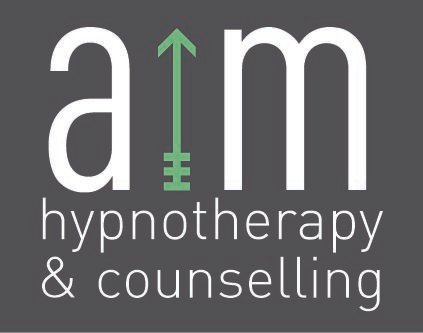AIM to Treat Anxiety
Don’t Believe Everything You Think! You can grow to be stronger than your thoughts!
Across Canada it's estimated that 725,000 people experience symptoms consistent with generalized anxiety disorder, a condition involving frequent and persistent worry about everyday activities (Statistics Canada, 2013).
While some people benefit from receiving a diagnosis, many experience persistant worry, physical and mental discomfort and other symptoms of anxiety that do not necessarily need professional diagnosis.
The truth is that as far as human emotions go, anxiety is a common and even necessary one that aids in our survival. More recently in our society, Anxiety has become a buzzword and usually seen as a negative emotions that we need to 'get rid of’; but Anxiety actually a protective mechanism that has served us throughout evolution. Anxiety is meant to help protect us by alerting us to situations that feel unsafe or motivate us into action.
So if Anxiety is natural and helpful, why does it feel so uncomfortable and debilitating?
Thought our evolutionary history our anxiety was present to help us physically escape from dangerous situations. If we sensed danger, it was usually something that could be lethal like a predatory animal or some other equally dangerous scenario. Faced with danger, our anxiety would help us with ‘fight or flight’, either to fight off the dangerous other or run to safety.
The problem is that our bodies and brains haven’t changed much from those of our ancestors who faced physical danger on a regular basis. We are now is a time that is relatively safe but our bodies continue to react with heightened anxiety to cues of ‘danger’ that are objectively safe. Our boss requesting a private chat, an invitation to a party where we might feel awkward, a crowded skytrain that stalls on the tracks. All these things could elicit a feeling of ‘danger’ and our bodies can react to these things as though we are physically getting ready for ‘fight or flight’.
Excessive Anxiety, is as though our safety alarm is over performing and there is a sense that the fear or hesitation we feel doesn’t match the situations we face. We know on a consciously level that we are safe but something inside us, our subconscoious is still ringing an alarm we feel unable to shut it off.
Over time a high level of chronic or acute anxiety can be tiring and isolating. It can cause some to hide or avoid people or places, creating a barrier between them and the kind of life they would like to live.
THE CHALLENGE
Anxiety can be all encompassing - it can feel and look different and show up as a broad range of symptoms including IBS, insomnia, procrastination, perfectionism and avoidance of social settings.
Anxiety can also wear down self-esteem and confidence. People suffering from anxiety often underestimate their abilities to cope with stress and overestimate the possibility that the worry or fear will be disastrous (Holdevici & Carcium, 2010).
Treating anxiety, means helping increase an individuals tolerance of stressful situations, which strengthens their ability to cope with future challenges.
Our Approach to Treating Anxiety
At Aim Hypnotherapy & Counselling, our approach to managing and reducing anxiety is based on scientific research and experience.
Studies support the use of clinical hypnotherapy as an effective and powerful technique to coping with most types of anxiety and stress (Khan, 2010). Hypnotherapy can help increase a persons self-confidence by providing experiential tools to manage emotional reactivity. Hypnotherapy teaches the mind and body of their internal capability of tolerating and moving through distressing and challenging situations (Smith, 1990). The sensation of trance can be a transformational experience as it allows people to experience their own body and mind in a whole new way.
At Aim Hypnotherapy & Counselling we support clients by first taking the time to understand the underlying causes of anxiety and stress throughout their lives. Our first step creates safety and understanding through compassionate client lead one on one counselling. Here we explore your emotional experience of the past events in order to better understand how you may have learned behaviours and coping strategies that have contributed to current anxious thoughts and feelings. By first taking the time to understand clients unique experiences we are able to provide a hypnosis session that is personalized and highly effective.
The second step in our approach involves providing a comfortable, safe and empowering hypnotherapy sessions. Similar to the experience of daydreaming, our clients often describe hypnosis as a 'highly relaxed and focused state of calm'. This state provides an opportunity to increase resilience and lower physical and emotional reactions to stress. Through talk therapy and the practice of hypnosis clients learn more about themselves and how to regulate their own emotional reactivity both on a conscious and subconscious level.
At Aim Hypnotherapy & Counselling, our two-step approach to treating anxiety delivers positive and lasting change. If you are ready to see how this approach can help you or have any questions please contact us for more information.
REFERENCES
- Holdevici, Irina., Carcium, Barbara. (2010). The use of Ericksonian hypnosis in somatic disorders. Social and Behavioral Sciences. Vol 33, 75–79. Elsevier. DOI: 10.1016/j.sbspro.2012.01.086.
- Kahn, Stephen. (2010). Stress and Anxiety. In Barabasz, Arreed Franz (Ed); Olness, Karen (Ed); Boland, Robert (Ed); Kahn, Stephen (Ed). Medical Hypnosis Primer: Clinical and Research Evidence. (pp. 83- 86). New York, NY, US: Routledge/Taylor & Francis Group. DOI: Unknown.
- Smith, W (1990). Hypnosis in the treatment of anxiety. Bulletin of the Menninger Clinic. 54(2), 209-216. DOI: Unknown.
- Statistics Canada. (2013). Canadian Community Health Survey: Mental Health, 2012. Last updated September 18, 2013. http://www.statcan.gc.ca/daily-quotidien/130918/dq130918a-eng.htm (Accessed February 12, 2016).

